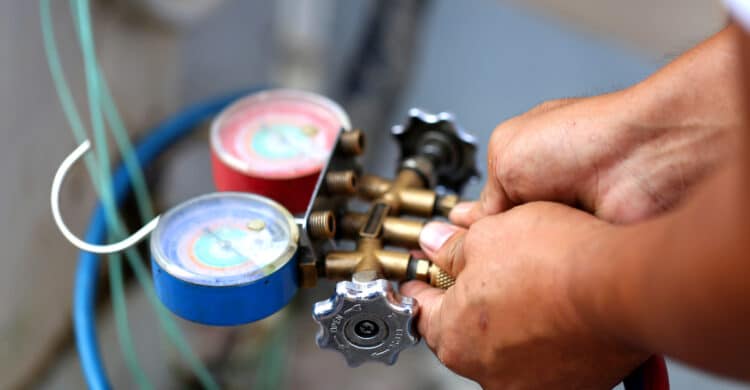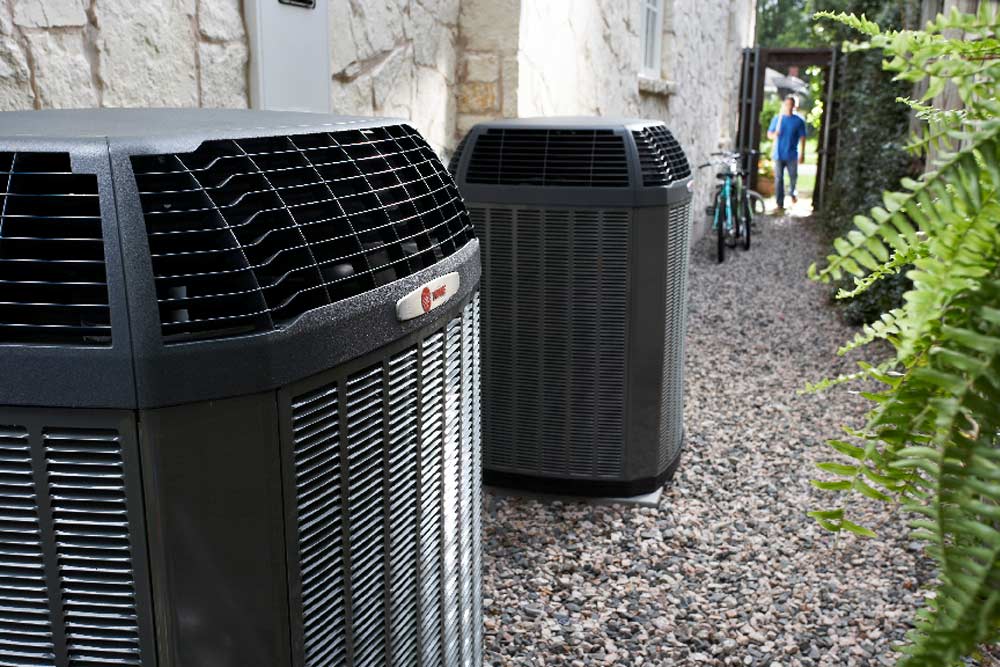
Update on the 401a Refrigerant Change
In other words, the refrigerant present in HVAC units all over homes, offices, and all manner of structures across the nation, would have to be replaced with something different – which could also mean a change in the machines that use them.
Why? Because the main HVAC refrigerant – known as R-410A – was found to be incredibly harmful to the environment. While there is no such thing as a truly “environmentally friendly” refrigerant, R-410A was deemed especially dangerous by the Environmental Protection Agency (EPA) following the American Innovation and Manufacturing (AIM) Act.
That means that HVAC companies needed to determine refrigerant and HVAC system alternatives. However, even with that deadline less than a year away, there have been some developments in the implementation of AIM that you should be aware of.
What You Need to Know About the R-410A Phase Out
While the R-410A phase out is still very real, it is not moving at the same pace as originally determined by AIM.
The EPA recently changed the rule that banned the installation of R-410A systems. Originally those systems could not be installed after January 1, 2025. Now those systems may be installed up to January 1, 2026.
Again, that does not mean that change is coming. These concessions provide more time for HVAC contractors, installers, and manufacturers to react to the impending change.
You should also know that the next generation of refrigerants that are taking the place of R-410A are R-32 and R-454B. Together, this next level of cooling chemicals is referred to as A2L refrigerants.
Environmental Concerns and Regulations
The reason that R-410A is being replaced is because of its high Global Warming Potential (GWP) number. The higher the GWP number, the higher the level of HFCs present in the refrigerant. HFCs are known to deplete the planet’s protective Ozone layer.
That is why the EPA set lower levels of GWP. Due to AIM, the current new GWP is 750. And R-410A possesses a GWP of 2,088. That is a much higher number than the refrigerant R-410A replaced, R-22.
The new alternatives possess much lower GWPs – R-32’s GWP is five times less than R-410A, and R-454B GWP is 3 times less than R-410A.
Currently, there are no special training or certification requirements for A2L refrigerants. However, the EPA is currently considering how to address this aspect.
Industry and Market Implications
While the new GWP numbers may offer an improvement environmentally, the change also means that contractors, installers, manufacturers, and customers face decisions and changes ahead. And this reality may not be easy or inexpensive.
That is because A2L refrigerant can only be used in systems designed explicitly for use with this new refrigerant type. HVAC units designed to use R-410A refrigerant cannot accommodate A2L refrigerant – unless they are retrofitted.
The result is that HVAC professionals need to understand how to work with A2L, as well as R-410A for several years – until all older model HVAC units are replaced or retrofitted.
These types of expenses are why, for instance, the Air Conditioning Contractors of America (ACCA) opposed a mandate that required all used HFC cylinders to be returned to “certified reclaimers.” The ACCA said this requirement would create costly logistical challenges for contractors already faced with other challenges associated with the new refrigerants.
Future of Refrigerants in HVAC
With R-410A on its way out, let’s look closer at some of the common low-GWP alternatives – A2Ls.
First, you should know that A2L refrigerants are classified by the American Society of Heating, Refrigerating and Air-Conditioning Engineers (ASHRAE) as mildly flammable. These refrigerants are not overly dangerous for trained and cautious professionals, however, as they require a high level of energy to ignite an A2L refrigerant. Professionals will still require extra training to understand these refrigerants.
A2L refrigerants will also require updates to standards and building codes to allow for safe installation and use. However, this will occur over time and allow HVAC professionals to learn and get used to new refrigerants, including two specific chemicals: R-32 and R-454B
R-32
This refrigerant is readily available and is even used with other gasses to make R-410A – which is a 50/50 blend of R-32 and R-125. But it also has a third lower GWP number (675) than R-410A – which could lead to zero Ozone depletion.
R-32 offers superior energy efficiency, as well as high refrigeration capacity and thermal conductivity. It is easy to handle and recover and offers low toxicity.
And, while it is technically flammable, the conditions required to ignite R-32 are incredibly specific, rendering it safe for both residential and commercial use.
R-454B
This refrigerant offers an even better heating efficiency than R-32 – and R-454B requires 5-10% less volume than R-410A to run. It also has a lower GWP than even R-32, at 465.
The operating pressures and temperatures that R-454B requires are very similar to those of R-410A, meaning that manufacturers may use similar parameters when building HVAC equipment.
R-454B is also highly unlikely to ignite – in fact, studies show it is even harder to ignite than R-32.
R-410A Phase-down Timeline
While certain aspects of the timeline regarding the end of R-410A have slowed, it is still very much in effect. It started in 2022, with a 10% decrease in production.
The goal of AIM is to decrease R-410A production by 40% in 2024.
By 2029, that number will increase to 70%.
The numbers continue to accelerate after that, with an 80% decrease by 2034 and an 85% decrease by 2036.
Myths About the R-410A Phase Out
Because of AIM and the realization of change, there were – naturally – plenty of myths that spread about the R-410A phase out. However, we can assure you that many of these stories that have circulated are, in fact, false:
The Phase Out Will Happen Overnight
We’ve already shown you one change: Systems that utilize R-410A can be sold until January 1, 2026. Therefore, there is still time to adjust.
The government has learned lessons from R-22 and is taking its time to avoid major cost spikes. This is what happened when the predecessor of R-22 was banned from manufacture or import in 2020.
R-410A Price Will Increase
Certainly, you can expect some price increases in R-410A. However, the slow phase out is designed to avoid a skyrocketing market.
There are other factors to consider, as well. Overall, inflation may also be a cause of refrigerant price increases. Labor costs are also increasing, while the metal used in refrigerant containers has also increased in price
Much of R-410A is also manufactured in China, and shipping costs have increased.
Will I Have to Replace My Equipment to Avoid Bans?
You can retrofit and repair older HVAC systems well into the lifespan of any newer R-410A system. As referenced earlier, the full phase out of R-410A systems is not expected until 2037.
Even if you installed a brand-new HVAC system today in 2024, you would likely need a new system by the time R-410A is completely unavailable.
Stay Up to Date with Conditioned Air Systems
As north Georgia’s heating and cooling leader, Conditioned Air Systems stays on top of every development in the HVAC industry. That means that we know exactly what to expect with the future of R-410A and are fully prepared for the phase out mandated by AIM. We are determining the best uses of A2L refrigerants, as well as learning how to retrofit HVAC systems that currently utilize R-410A.
Our staff is able to answer all your questions and help you determine the best choices for your home and commercial HVAC needs – no matter what type of refrigerant is designated by officials.
Call us today at 770-536-7509 to learn more.
North Georgia’s Heating and Cooling Leader

